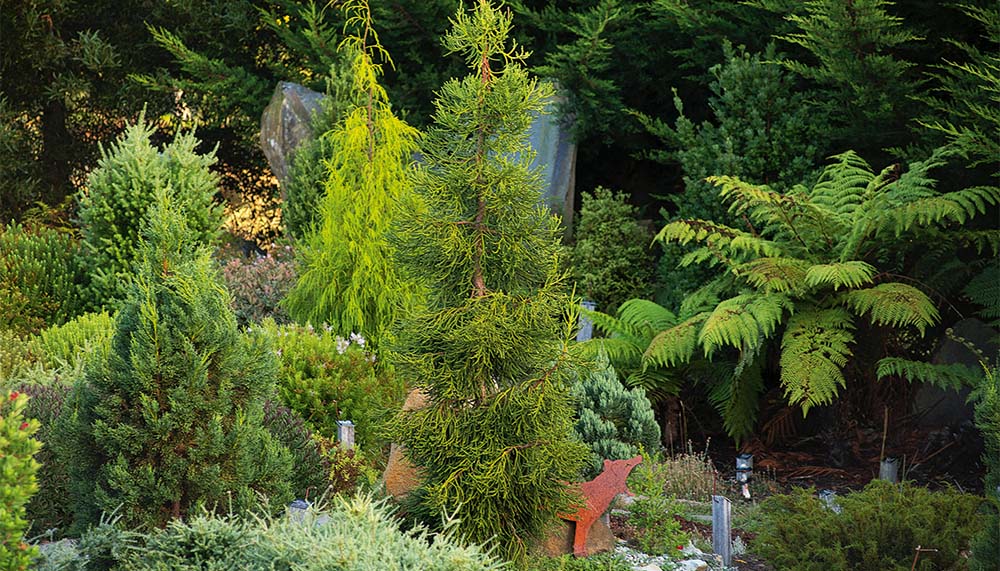A Bruny Island garden showcasing the ancient plants of the Gondwanan supercontinent is now an important resource for global plant biodiversity research.
Story + Photos Don Fuchs
Dr Tonia Cochran is on her knees in a mulch-covered garden bed. Armed with a hand rake (and a double degree in zoology and botany), she is planting a sapling of a Wollemi pine that she propagated from seed. Behind her, several of these ancient plants are flourishing, with the tallest rising 4m. “I really love the Wollemi pine,” she says. “It’s a marvellous story that something that ancient was unknown to us until almost 30 years ago.”
Not far from these so-called ‘dinosaur trees’ is a grove of blooming leatherwood. One is the endemic Tasmanian leatherwood from which the famous honey is produced. “I have several plants with different flower colours,” Tonia says. “They are usually white, but I also have two pink-flowering forms plus a couple of variegated forms.” Her leatherwood collection includes another Tasmanian endemic, the dwarf leatherwood; pinkwood from the rainforests of NSW and Victoria; Wilkie’s leatherwood, which is only found on the highest peaks of Far North Queensland; and an exotic from Chile.
These two groves form part of Tonia’s brainchild, the Jurassic Garden on Bruny Island, Tas. Gondwana is the ancient supercontinent that is believed to have broken up about 180 million years ago into the world’s southern continents (including Africa, South America and Australia), resulting in similar plants being found across those areas. “I thought, ‘Wouldn’t it be good to demonstrate that concept of Gondwana somehow?’” she explains. So, in 2013 she began planting a garden to show how various regions today are linked to the ancient supercontinent through the plants that grew on Gondwana. Garden visitors can compare plants from countries such as Australia, New Zealand, New Caledonia and South Africa, but instead of structuring the garden country by country, Tonia planted them in family groups. “You plant a South American one next to an Australian one next to a South African one, so you can see the similarities between them.”
This story excerpt is from Issue #141
Outback Magazine: February/March 2022









